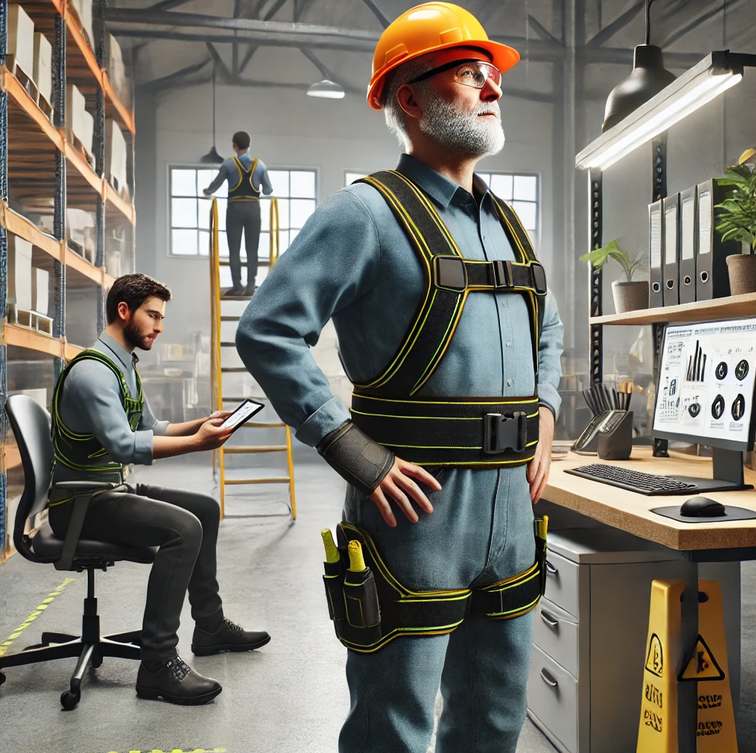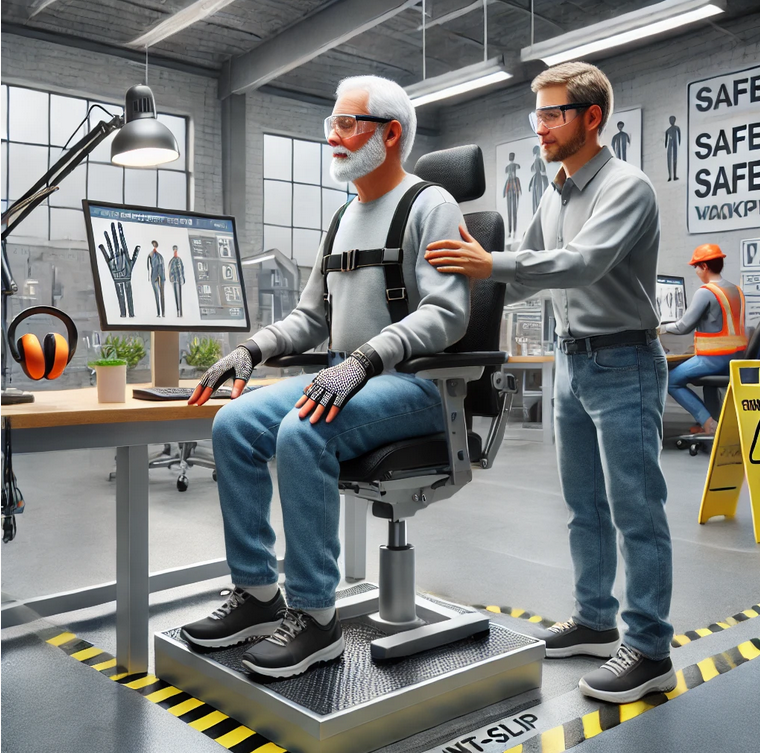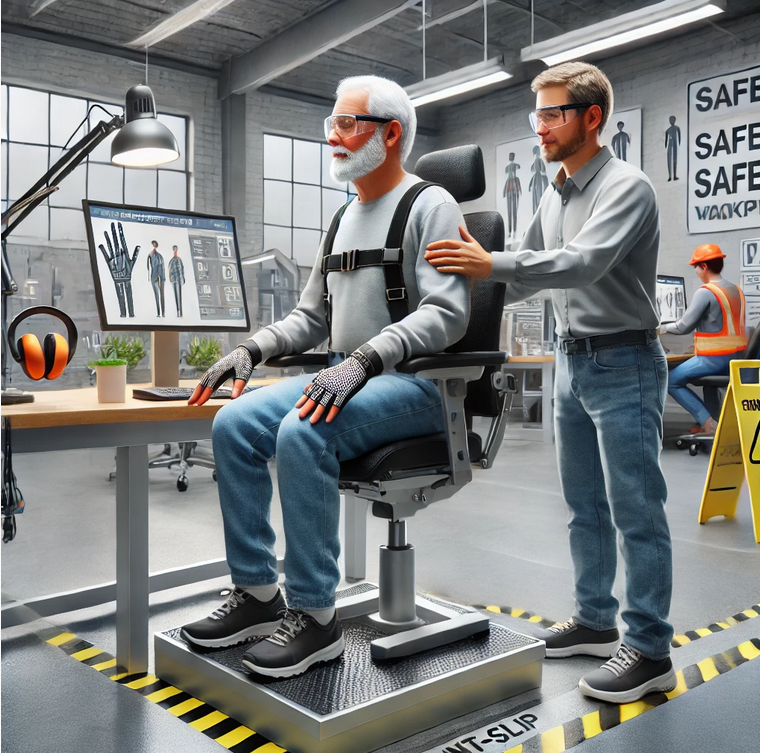Aging Workforce Challenges: Safety Strategies for Older Employees
As the global workforce continues to age, organizations face unique safety challenges that require proactive strategies. According to the World Health Organization, the number of people aged 60 years and older is projected to double by 2050.

In many industries, older employees bring invaluable experience, but they may also face increased risks due to age-related physical and cognitive changes.
To maintain a safe and inclusive workplace, it is essential to implement safety strategies tailored to their needs.
Understanding the Challenges Faced by Older Workers
Older workers face unique challenges in the workplace due to the natural aging process. Addressing these challenges is key to ensuring safety and productivity.
Physical Changes
Aging naturally affects physical abilities such as strength, flexibility, and endurance. These changes can make older employees more susceptible to injuries, especially in physically demanding jobs.
Reduced bone density increases the risk of fractures, while slower reaction times can hinder the ability to respond quickly to hazards.
Sensory Decline
Hearing and vision tend to deteriorate with age, which can affect workplace safety. Older workers may struggle to hear warning signals, alarms, or verbal instructions.
Vision changes, such as reduced depth perception or sensitivity to glare, can make it challenging to navigate certain environments.
Chronic Health Conditions
Many older employees manage chronic health issues such as arthritis, diabetes, or cardiovascular diseases. These conditions can impact mobility, stamina, and overall work performance, increasing the likelihood of workplace incidents.
Cognitive Changes
While cognitive abilities remain stable for many, aging can affect memory, decision-making, and processing speed.
These changes may impact an older worker’s ability to perform complex tasks or adapt to new technologies.
Strategies to Enhance Safety for Older Employees
1. Conduct Comprehensive Risk Assessments
Regularly assess the workplace to identify potential hazards that may disproportionately affect older workers.
Tailor solutions to address risks such as slippery floors, poorly lit areas, or tasks requiring excessive physical exertion.
Table: Common Workplace Hazards for Older Workers and Mitigation Strategies
| Hazard | Impact | Mitigation Strategy |
|---|---|---|
| Slippery Floors | Increased risk of slips and falls | Install anti-slip mats and improve lighting |
| Poor Ergonomics | Strain injuries and musculoskeletal issues | Provide ergonomic furniture and tools |
| Loud Environments | Hearing damage | Supply hearing protection (e.g., earplugs) |
| Heavy Lifting | Risk of back injuries | Use mechanical lifting aids |
2. Implement Ergonomic Solutions
Ergonomics is critical for reducing strain and preventing injuries among older employees. Provide adjustable workstations, anti-fatigue mats, and tools designed to minimize repetitive stress.
Encourage proper posture and ergonomic practices through training sessions.
3. Offer Flexible Work Options
Flexibility in scheduling can help older workers manage fatigue and health conditions.
Options such as shorter shifts, part-time roles, or telework can accommodate their needs while maintaining productivity.
4. Provide Training on New Technologies
Technology can improve safety, but older workers may need additional training to adapt.
Offer user-friendly resources and one-on-one support to ensure they feel confident using tools such as digital safety monitors or automated machinery.
5. Enhance Communication Strategies
Use clear, concise, and easily accessible communication methods. Consider larger fonts for written materials and ensure auditory signals are loud enough to accommodate hearing impairments.
Multimodal communication—combining visual, auditory, and written information—can be particularly effective.
6. Promote Health and Wellness Programs
Encourage participation in wellness initiatives that address common health issues among older workers. On-site health screenings, fitness programs, and nutrition workshops can improve overall well-being and reduce the risk of work-related injuries.
7. Update Personal Protective Equipment (PPE)
Ensure that PPE is suitable for older workers. For example, lightweight tools and adjustable harnesses can reduce physical strain. Regularly review and update PPE to align with their needs.
8. Foster an Inclusive Culture
Create an environment where older employees feel valued and respected. Encourage intergenerational mentoring programs that allow younger and older workers to share knowledge and skills, fostering mutual support and collaboration.
Industries with High Aging Workforce Representation
Certain sectors are more likely to have a significant proportion of older employees. These include:
- Manufacturing: Physical demands in this industry require a focus on ergonomic solutions.
- Healthcare: Older workers in caregiving roles may face fatigue and musculoskeletal strain.
- Transportation: Drivers may experience challenges with vision, reaction time, and long hours.
- Construction: Heavy lifting and high-risk tasks necessitate targeted safety measures.
Case Study: Adapting to an Aging Workforce in Manufacturing
A mid-sized manufacturing company noticed a steady increase in the average age of its workforce. To address this, the company implemented several changes:
- Redesigned workstations with height-adjustable platforms and tools to reduce bending and stretching.
- Introduced rotating schedules to minimize fatigue and overexertion.
- Conducted workshops on using new machinery to ensure all employees were proficient and comfortable.
As a result, the company reported a 20% reduction in workplace injuries and improved morale among its older employees.
Benefits of Supporting Older Workers

Investing in the safety and well-being of older employees offers numerous advantages:
- Reduced Turnover: Experienced workers are more likely to remain with an organization that values their contributions and prioritizes their safety.
- Enhanced Productivity: Tailored safety measures reduce the risk of injuries, allowing employees to focus on their tasks.
- Knowledge Retention: Older workers often possess institutional knowledge that is invaluable for mentoring and training younger staff.
- Legal Compliance: Proactively addressing age-related safety needs helps organizations comply with regulations such as the Age Discrimination in Employment Act (ADEA).
Conclusion
An aging workforce presents challenges, but it also provides opportunities to leverage the skills and experience of older employees.
By implementing targeted safety strategies and fostering an inclusive culture, organizations can create a supportive environment that benefits all workers. Prioritizing the safety of older employees is not only a regulatory and ethical responsibility but also a strategic investment in the organization’s success.
For more occupational health and safety resources, visit OHSE.ca.


No comments yet